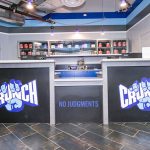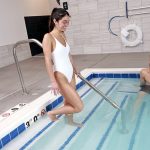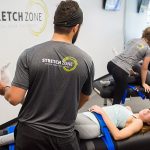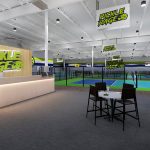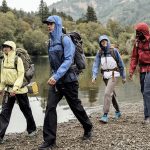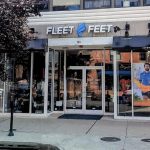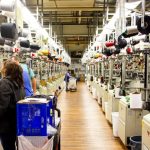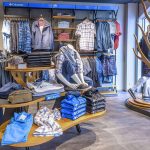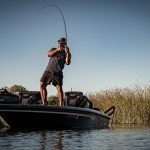The relative calm in the retail market continued in the first quarter with no mysterious “lost” quarters, major mergers or acquisitions announced. But while making comparisons to the prior year period was a simpler task in the Sporting Goods sector in Q1, the exercise became even more difficult in the Specialty sector since Foot Locker acquired 350 Footaction stores.
There were three IPOs announced since the beginning of the fiscal year, with Zumiez, the Seattle-based action sports retailer, the first to pull the trigger for the year with their filing in February. To say the retailers foray into the public market was a success would be an understatement as ZUMZ shares closed up more than 38% over the $18 offering price the first day of trading in early May. The momentum hasnt stalled either, with ZUMZ shares closing the week last Friday at $30.25, up 68% from the offering price. Golf Galaxy, a 44-door golf specialty retailer based in Minnesota, filed their papers in late May for a public offering and Retail Ventures, Inc. announced plans in March to spin off its DSW Shoe Warehouse unit in a public offering that would keep RVI as the controlling entity.
For the period ended April 30, 2005, or the quarter ended closest to that date for retailers not on a normal retail fiscal calendar, the retail sector again saw profit growth for the period outpace sales growth as the total profit gain for the retailers covered in this report increased 18.7% in the quarter while sales grew more than 14.2% for the period. Excluding the impact of merger integration charges associated with the Dicks Sporting Goods/Galyans deal and the incremental operating income realized from the inclusion of Hat World, the period was the third quarter in a row that profits outpaced sales by a two-to-one margin.
The addition of Golf Galaxy and The Walking Company in the numbers for the first time in the most recent quarter did little to help the bottom line figures for the period. Excluding both, the consolidated income line for the reporting retailers would have jumped nearly 30%, while sales would have increased 10% for the quarter.
Excluding merger integration costs, profitability in the Sporting Goods sector shined for the period, posting a 52.0% increase in net income for the period. The Catalog/Team/Web channel swung to a profit from a loss in the year-ago period and the Specialty and Family Footwear sectors both saw bottom line gains far outpace the sales gains for the quarter. Despite the gains, the retail sector still finds it difficult to generate profits from operations. Return on Sales for the total retail segment increased to 3.4%, up 40 basis points from the year-ago period, but still more than 5.5 full points less than the number generated on the vendor side of the table.
Specialty Channel profit growth in Q1 was aided by the inclusion of Hat World in the Genesco numbers that offset the loss at Golf Galaxy, but the sector still saw profits increase 27.8% when excluding both retailers for the period. While Foot Locker also saw a boost from the inclusion of the Footaction stores in the period, the nearly 21% gain at the worlds-largest-athletic-specialty-retailer was actually a drag on overall results, which would have been up more than 34% without the Foot Locker business. Golfsmith did little to bolster confidence in the golf specialty channel as they widened their loss for the period. Excluding Foot Locker, Inc. and golf specialty retail, the Specialty income line would have risen nearly 37% on a comp basis.
Foot Locker said that total sales for the period rose 14.5% excluding the impact of foreign currency, primarily the result of the addition of the Footaction stores, which contributed $126 million in sales for the quarter. Excluding both, Foot Locker would have seen total sales increase 3.9% for the period.
Hat World was only in the Genesco numbers for a month last year. Excluding Hat World, which was acquired in April 2004, GCO Specialty would have seen sales increase 12.9% for the quarter to $168.7 million and operating profit would have still jumped nearly 49% to $16.1 million, thanks to strength at both Journeys and the Underground Station group.
Return on Sales, which represents income as a percent of sales, was pegged at 5.2% for the Specialty channel in Q1, up about 30 basis points from the 4.9% ROS posted in Q1 last year, but down 400 basis points from the 9.2% ROS achieved in the fourth quarter. Excluding the drag from Foot Locker, Inc. and the golf specialty channel, Specialty sector ROS on a comp basis would have been 7.3% of sales, or a 120 basis point increase from the prior year period.
When assessing the impact of the inclusion of the Hat World, The Walking Company, and Footaction numbers in the quarter, SEW estimates that the sector would have seen sales rise 8.6% for the period on a like-for-like basis.
In the Sporting Goods Channel, the impact of acquisitions was less pronounced than in quarters past. TSA is in anniversary mode as a combined entity with Gart and Dicks is providing good pro forma numbers from their Galyans deal that enables the market to assess real metrics for the retailer. DKS, though, did see integration costs impact their numbers for the quarter.
Excluding those merger integration costs, DKS net income would have increased roughly 142% to $12.2 million and the total Sporting Goods channel net income line would have been up 52% for the quarter. Still, Sector ROS would have been just 0.8% of sales, thanks to the deep losses at Forzani and Gander Mountain. Excluding the big-box outdoor guys, full-line sporting goods stores would have seen net income jump 31% on a 7.6% increase in sales. The outdoor guys saw net income fall more than 13% on a 20% increase in sales.
The Catalog/Team/Web Channel would have seen sales increase 33.6% excluding the impact of Collegiate Pacific acquisitions.

